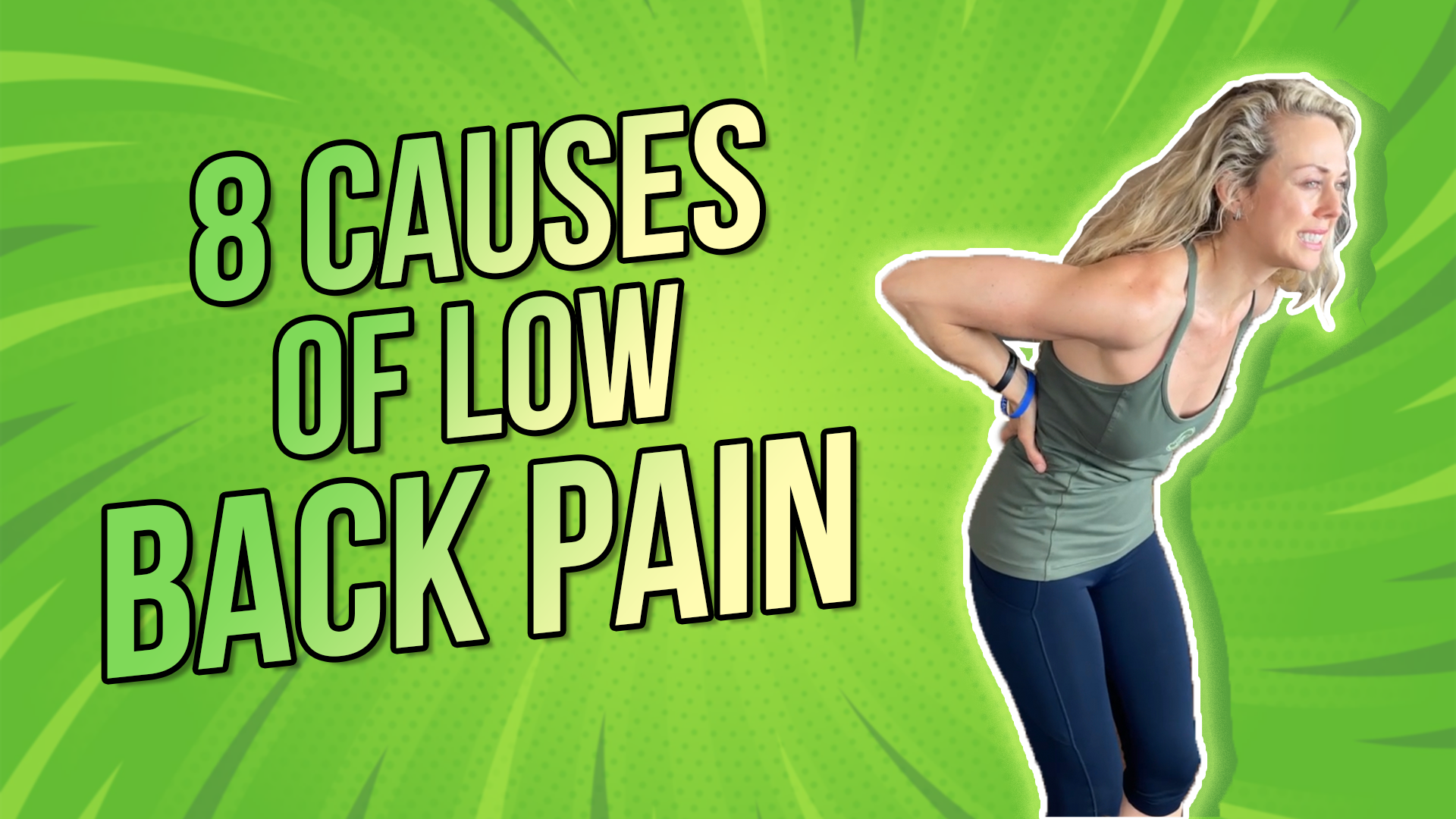Do you have low back pain, and you’ve been told that it’s from a weak core? Here are eight reasons why it may not be coming from your core.
One in four people experience low back pain in their lifetime, and it is also one of the number one causes of the opioid epidemic. Most people that are seeking pain medication are coming in initially for low back pain.
Rather watch or listen than read?
One of the things that is important to recognize with acute low back pain is that it can be treated very easily. However, because of the nature of our medical system, we tend to go to our primary care, get a muscle relaxer and pain medication, and get referred potentially for an X-ray. The X-ray doesn’t show anything, but you still continue to have low back pain. Now you are referred for an MRI but still don’t show anything except for some degeneration, which everyone after the age of 35 is going to have. You still don’t have any answers, so you get an injection. Then three months after this acute low back pain episode, you’re still having pain. Now you are in a chronic pain state.
Chronic pain is much different than acute pain. It is defined by having pain greater than three months and is referred to as central sensitization. Our nervous system becomes sensitized. We have no tissue damage, however, the brain is still interpreting that there is pain in, let’s say, for example, the low back.
Here are eight root causes of your low back pain, that isn’t simply a weak core. All these can also contribute to acute and/or chronic low back pain.
1) Poor Breathing
Our breath should be a diaphragmatic breath. We breathe 20 to 25,000 times a day. If we are not breathing from our diaphragm, then that means that the sequencing of our entire abdomen is affected. It also creates a stress response.
2) Movement Compensations
When we think of how pain or injury ultimately happens, think it’s when anatomy meets opportunity. If you have an ankle sprain, let’s say three months ago, and although it’s getting better, there’s still some stiffness in the ankle. Now every time you are walking and striking the ground in dynamic movement, there is asymmetry. You have different forces that are being transferred up through your body. That means that now you’re going to begin to compensate. You’ll change how my foot strikes the ground; how your pelvis is moving. This can be an example of how any movement-compensation, especially over a period of time, can ultimately lead to pain and or injury.
3) Stress
This can not be emphasized enough and how it’s one of the biggest factors in low back pain. Not only can we hold tension in our abdomen and our pelvic floor, but it also shifts our breathing to an upper chest breathing pattern. Additionally, stress is linked to inflammation. Without a doubt, I’ve seen in my clinical practice that this is one of the biggest driving factors of low back pain, especially chronic low back pain.
4) Poor Sleep
Inadequate or interrupted sleep is actually one of the biggest drivers of low back pain. Poor sleep also shuts down the release of our growth hormone, which is needed for repair and healing.
5) Chronic Inflammation
Ninety percent of all health conditions are linked to excessive or persistent inflammation; from eczema to anxiety, depression, and even Alzheimer’s. Now, when we think about inflammation as it relates to our musculoskeletal system or nervous system, inflammation will contribute to pain, joint stiffness, joint inflammation, osteoarthritis, and more. This can also consistent with chronic low back pain.
6) Sedentary Lifestyles
This can be one of the biggest drivers of recurring low back pain, per some of the research. We are meant to move; our bodies crave movement. We do not want to be in one position all day long. As you’re thinking about your day, think of it from a ‘movement mindset’. It doesn’t have to be exercising 30 to 60 minutes; you need to be moving all day long.
7) Poor Gut Health
Your gut is your second brain, and we have an entire nervous system located right there. If there are gut issues, that means there are inflammatory issues. Without a doubt, because we have 70 percent of our immune system in our gut, and we have this nervous system, when we are having visceral pain, this will influence the sequencing, timing, and coordination of all of our muscles and our abdomen and pelvis. It is definitely something that can contribute to low back pain, especially in the case of bloating and constipation.
8) Lack of Movement Variability
As I mentioned earlier, our bodies crave movement. When we are in sustained postures all day long like sitting at a desk or crossing our legs in one direction, not changing positions consistently throughout the day, then our fascial tissue, our three-dimensional network, or ectoskeleton can get sticky. It is meant to be elastic, create tension, and transfer force efficiently. If we are sitting in sustained postures throughout the day and not changing positions, like getting down to the floor and getting back up, this can, unfortunately, contribute to low back pain.
There you have it; eight different root causes of why you might have low back pain. There are, of course, other things like pelvic pain and other medical conditions, but hopefully, you can appreciate that it is not necessarily because you have a weak core that you are having low back pain, and if you strengthen your core it’s going to get better. You want to look well beyond that.
Reach out for a 15-minute FREE discovery session to see how we can help you on your journey.
For more content, make sure to subscribe to our YouTube channel here.
Other things that may interest you:




